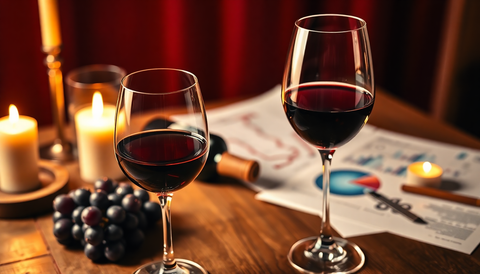As the sun sets over the rolling vineyards of McLaren Vale, the team at McLaren Vale Cellars knows that the true magic of wine lies not just in the bottle, but in the art of cellaring. In this comprehensive guide, we'll explore the intricacies of storing and aging red wine, with a focus on the unique challenges and opportunities presented by the Australian climate.
Understanding the Aging Process
The journey of a fine red wine is a captivating one, filled with nuance and complexity. As the wine ages, its flavors, aromas, and textures evolve, revealing new layers of depth and character. This transformation is the result of a delicate interplay between the wine's chemical composition and the environmental conditions in which it is stored.
During the aging process, the tannins in the wine gradually soften, the fruit flavors become more integrated, and new, more subtle notes emerge, such as earthy, spicy, or even savory elements. The rate and direction of this evolution are heavily influenced by factors such as temperature, humidity, light exposure, and the wine's initial quality and structure.
Mastering the Art of Cellaring
Establishing the perfect wine cellar is a balance of science and personal preference. The key is to create an environment that mimics the ideal conditions found in the world's most renowned wine regions. For Australian red wine enthusiasts, this means addressing the unique challenges posed by our warm, dry climate.
Temperature Control
Temperature is arguably the most critical factor in successful wine cellaring. Ideally, red wines should be stored at a consistent temperature between 12-18°C (54-64°F). Fluctuations in temperature can cause the wine to expand and contract, leading to premature aging or even spoilage.
In the Australian context, this often means investing in a dedicated wine refrigerator or climate-controlled cellar. These specialized units not only maintain the optimal temperature but also regulate humidity levels, which are equally important for preserving the wine's integrity.
Humidity Management
Maintaining the right humidity levels is crucial for preventing the wine's cork from drying out and allowing air to seep in, which can lead to oxidation. The ideal humidity range for a wine cellar is between 60-70%.
In drier Australian climates, a humidifier may be necessary to keep the environment suitably moist. Conversely, in more humid regions, dehumidifiers can help prevent the buildup of excess moisture, which can foster the growth of mold and mildew.
Light and Vibration Considerations
Exposure to direct light, whether natural or artificial, can cause a wine to "lightstrike," resulting in undesirable flavors and aromas. Wine cellars should be designed with minimal light exposure, and any necessary lighting should be equipped with UV-filtering bulbs.
Additionally, excessive vibration can disrupt the wine's delicate equilibrium, accelerating the aging process and potentially causing the sediment to become unsettled. Ideal wine storage locations should be free from heavy foot traffic or machinery that could create vibrations.
Bottle Orientation
The traditional method of storing wine bottles on their sides helps to keep the cork moist, preventing air from entering the bottle and causing oxidation. This orientation also ensures that the wine remains in contact with the cork, which can help to maintain the wine's freshness and integrity over time.
Monitoring and Maintenance
Regularly monitoring your wine cellar's temperature, humidity, and overall conditions is essential for ensuring the long-term success of your collection. Invest in a reliable data logger or hygrometer to track these metrics, and be prepared to make adjustments as needed to maintain the ideal environment.
Selecting the Right Wines for Cellaring
Not all red wines are created equal when it comes to cellaring potential. As a general rule, full-bodied, high-tannin varietals like Cabernet Sauvignon, Shiraz, and Malbec tend to age the best, as their robust structure and complexity allow them to evolve gracefully over time.
When building your cellar, focus on sourcing premium, well-structured wines from renowned Australian regions like McLaren Vale, Barossa Valley, and Coonawarra. These wines are often crafted with cellaring in mind, and their quality and provenance can be reliably verified.
It's also important to consider the wine's vintage and drinking window. While some wines may be enjoyable upon release, others may require several years of aging before reaching their peak. Consult with the experts at McLaren Vale Cellars to determine the optimal cellaring timeline for the wines in your collection.
Unlocking the Rewards of Cellaring
Patience is a virtue when it comes to cellaring red wine. With the right conditions and a bit of foresight, you can unlock a world of depth and complexity that simply can't be achieved with a freshly opened bottle.
As you carefully monitor your wine's evolution over the years, you'll be rewarded with a deeper understanding and appreciation of the winemaker's craft. Each sip will reveal new layers of flavor, aroma, and texture, transporting you on a sensory journey that celebrates the art of winemaking and the unique terroir of the McLaren Vale region.
So, whether you're a seasoned collector or just beginning to explore the world of wine cellaring, let the team at McLaren Vale Cellars guide you on your journey. With the right knowledge and a little bit of care, you can unlock the true potential of your red wine collection and savor the rewards of patience and passion.




Comments (0)
There are no comments for this article. Be the first one to leave a message!